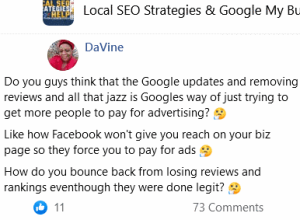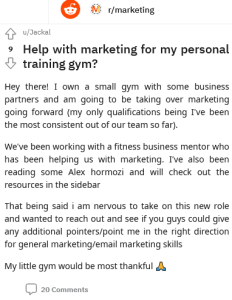Should You Avoid Hashtags? – 6 Reasons Hashtags Are Not Working For You On Instagram All Instagram users obsess over hashtags and most believe hashtags are their best chance of getting some more likes, comments, and reach on the platform.
BUT, 99% of Instagram users get almost no reach from hashtags, and they just keep spamming these hashtags in a bid to go "viral" someday.
Sad, isn't it? Sure it's sad and obvious you're one of the people adding 20 – 30 popular hashtags like #love #peace #cute #happy and just hoping you go viral.
You may get some results from your hashtag spamming at the beginning but the results won't last long.
So why are hashtags not working for you? And how can you get insane results like this from hashtags?
Here are 6 ways you can get good and sustained results from hashtags:
Avoid Popular Hashtags
Yup! You read that right, and I'm not even joking.
"But the Instagram gurus on YouTube said popular hashtags are good"
Popular hashtags will give you no results because popular hashtags are very difficult to rank on because there's a lot of competition on those popular hashtag.
The hashtag #happy has almost a billion posts and this hashtag gets used by more than 3 people every second.
Can you see how "popular" hashtags are bad for your account? Imagine competing with 3 people every second that's not a battle you can win unless you have above 100k followers so avoid hashtags with millions of posts.
Avoid Using Hashtags Often
Instagram hates spam, and this means the Instagram robot will reduce your reach on hashtags if you keep adding hashtags.
Adding 20 or more hashtags to your posts will help you get more likes but the results you get from hashtags will reduce once Instagram knows you're a hashtag spammer.
Hashtags are a good source of engagement when used correctly, but getting addicted to them will ruin your Instagram account.
Use hashtags on only 50% of your posts (or less).
Don't repeat hashtags also because using the same hashtag on all your posts is considered spam.
Avoid Using Hashtags When You Have No Momentum
Your posts will reach a lot of people and get more likes & comments if your account has generated the momentum to rank on hashtags.
Every Instagram hashtag has 3 sections, which are:
– The Videos Section
This is the section where all viral videos with the hashtag can be found.
– The "Top" Section
This section is where all the "viral" posts on the hashtag appear.
– The Recent Section
All new posts with the hashtag appear in the recent section.
The "top" section is where thousands of people get to see, and engage with your posts, but you need momentum to get your posts into the "Top" Section.
The "momentum" of your Instagram account means the average number of likes your account gets, and how consistently you post.
Here's an explanation of momentum and how it affects your posts.
Let's assume we have 2 Instagram accounts:
Account A has 5,000 followers, 200 likes per posts, and posts once daily.
Account B has 1,000 followers, 200 likes per post, and posts 3 times daily.
Which of the accounts has more momentum? A or B?
Well, account B has more momentum than account A because:
Account B has an engagement rate of 20% (200 likes per post)
Account B posts often
This means account B has a higher chance of getting to the "Top" section of hashtags than account A.
Momentum is important for getting the best out of hashtags, so build an active audience and be like account B before you begin to use hashtags on your posts.
Focus More On Content Than Hashtags
Creating good/viral content is more (important) than relying on hashtags to make your posts go viral.
Hashtags help you reach more people but the people you reach won't engage with your post if it's low quality.
Good and viral content will make you go viral and reach a wide audience whether you use hashtags or not.
Relevance Matters
Resist the urge to add irrelevant hashtags to your post, this means you shouldn't add hashtags like #fruit #surfing #tbt to a post of your dog.
Instagram knows what your post is about, so stick to relevant hashtags only as adding irrelevant hashtags will make you look like a spammer, and remember Instagram hates spammers.
Daily Average Post Count (DAPC)
The daily average post count of a hashtag is the average number of times a hashtag is used in a day.
A hashtag with a high daily average post count is very competitive because a lot of people are using the hashtag while a hashtag with a low daily average post count is less competitive.
Let's assume we have two hashtags:
Hashtag 1 – #sunset
Hashtag 2 – #sunset_madness_
sunset gets used by 3 people every second, while #sunset_madness_ gets used by 1 person every 4 minutes.
This means #sunset is used by an average of 250,000 people daily, I calculated it by multiplying the number of posts per second (3) by the number of seconds in a day (86,400)
We can conclude #sunset is a very competitive hashtag because your post has to compete with over 250,00) posts on the hashtag in a day.
sunset_madness_ is a less competitive hashtag because it gets used once in 4minutes and has an average daily post count of 360, and this means your post has to compete with only 360 other posts.
It's takes a lot of time to do the maths and find out the DAPC of each hashtag but don't bother about it because less popular hashtags with 50,000 to 500,000 total posts usually have a daily average post count below 1,000
So use more specific and less popular hashtags and you'll reach more people through hashtags as less popular hashtags have a lower DAPC (competition).
These are the major things you need to know to make hashtags work for you.
Got any questions? Use the comment box below and I'll be happy to reply.
6 Tips for Instagram Hashtags and the Follower Engagement
6 Secrets of a Successful Social Media Strategy: Goals, Target Audience, Competitors, Content
4 Pillars of Social Media Marketing
Instagram Content Ideas for a Business
The Complete Guide to Pinterest





